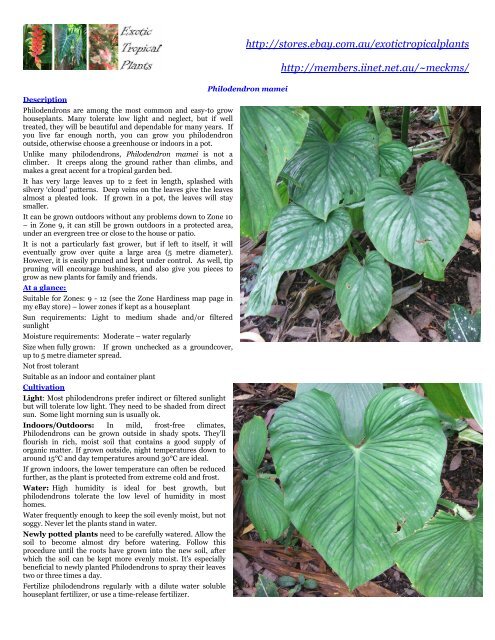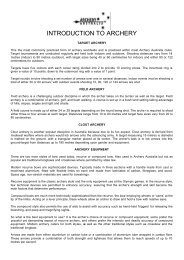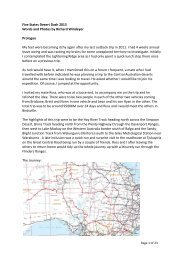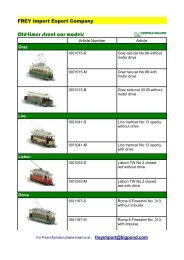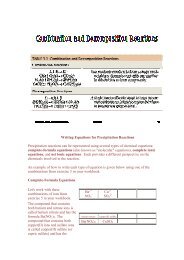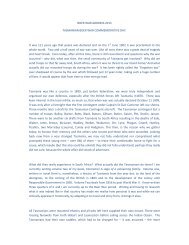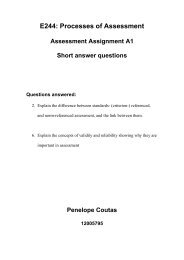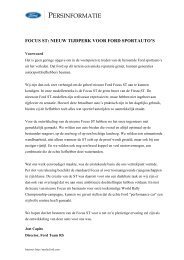Philodendron mamei - Buyers info - iiNet
Philodendron mamei - Buyers info - iiNet
Philodendron mamei - Buyers info - iiNet
Create successful ePaper yourself
Turn your PDF publications into a flip-book with our unique Google optimized e-Paper software.
Description<br />
<strong>Philodendron</strong>s are among the most common and easy-to grow<br />
houseplants. Many tolerate low light and neglect, but if well<br />
treated, they will be beautiful and dependable for many years. If<br />
you live far enough north, you can grow you philodendron<br />
outside, otherwise choose a greenhouse or indoors in a pot.<br />
Unlike many philodendrons, <strong>Philodendron</strong> <strong>mamei</strong> is not a<br />
climber. It creeps along the ground rather than climbs, and<br />
makes a great accent for a tropical garden bed.<br />
It has very large leaves up to 2 feet in length, splashed with<br />
silvery ‘cloud’ patterns. Deep veins on the leaves give the leaves<br />
almost a pleated look. If grown in a pot, the leaves will stay<br />
smaller.<br />
It can be grown outdoors without any problems down to Zone 10<br />
– in Zone 9, it can still be grown outdoors in a protected area,<br />
under an evergreen tree or close to the house or patio.<br />
It is not a particularly fast grower, but if left to itself, it will<br />
eventually grow over quite a large area (5 metre diameter).<br />
However, it is easily pruned and kept under control. As well, tip<br />
pruning will encourage bushiness, and also give you pieces to<br />
grow as new plants for family and friends.<br />
At a glance:<br />
Suitable for Zones: 9 - 12 (see the Zone Hardiness map page in<br />
my eBay store) – lower zones if kept as a houseplant<br />
Sun requirements: Light to medium shade and/or filtered<br />
sunlight<br />
Moisture requirements: Moderate – water regularly<br />
Size when fully grown: If grown unchecked as a groundcover,<br />
up to 5 metre diameter spread.<br />
Not frost tolerant<br />
Suitable as an indoor and container plant<br />
Cultivation<br />
Light: Most philodendrons prefer indirect or filtered sunlight<br />
but will tolerate low light. They need to be shaded from direct<br />
sun. Some light morning sun is usually ok.<br />
Indoors/Outdoors: In mild, frost-free climates,<br />
<strong>Philodendron</strong>s can be grown outside in shady spots. They'll<br />
flourish in rich, moist soil that contains a good supply of<br />
organic matter. If grown outside, night temperatures down to<br />
around 15°C and day temperatures around 30°C are ideal.<br />
If grown indoors, the lower temperature can often be reduced<br />
further, as the plant is protected from extreme cold and frost.<br />
Water: High humidity is ideal for best growth, but<br />
philodendrons tolerate the low level of humidity in most<br />
homes.<br />
Water frequently enough to keep the soil evenly moist, but not<br />
soggy. Never let the plants stand in water.<br />
Newly potted plants need to be carefully watered. Allow the<br />
soil to become almost dry before watering. Follow this<br />
procedure until the roots have grown into the new soil, after<br />
which the soil can be kept more evenly moist. It's especially<br />
beneficial to newly planted <strong>Philodendron</strong>s to spray their leaves<br />
two or three times a day.<br />
Fertilize philodendrons regularly with a dilute water soluble<br />
houseplant fertilizer, or use a time-release fertilizer.<br />
http://stores.ebay.com.au/exotictropicalplants<br />
<strong>Philodendron</strong> <strong>mamei</strong><br />
http://members.iinet.net.au/~meckms/
http://stores.ebay.com.au/exotictropicalplants<br />
http://members.iinet.net.au/~meckms/<br />
Pots: <strong>Philodendron</strong>s grown in pots need well-drained pots that aren't too large for the plants. They do best when their roots are slightly<br />
cramped, but not too tightly packed that they form a tight ball of roots.<br />
Most kinds of <strong>Philodendron</strong>s need supports to cling to. A totem pole, pieces of rough bark or stakes wrapped with a thick layer of<br />
sphagnum moss will serve well. Otherwise, many <strong>Philodendron</strong>s make very beautiful hanging basket specimens.<br />
You can repot overcrowded plants at any season, using a general-purpose potting soil. Plants may be propagated at any season from stem<br />
cuttings, or by air layering. Some philodendrons will produce offsets.<br />
Problems: In the home, plant diseases are very rarely a problem. Too much or too little water plus insects and mites are the main<br />
problems.<br />
Root rot usually results from a soil mix that does not drain quickly or overly frequent watering.<br />
Yellowing of lower leaves and the death of the growing tips can be caused by too little light or overwatering.<br />
Too much fertilizer can cause tips of leaves to curl and brown.<br />
While philodendrons are generally pest-free, aphids, mealybugs, scales and spider mites can infest them.<br />
Some philodendrons contain a chemical that causes a burning sensation and can be toxic if the foliage is eaten. Keep philodendrons away<br />
from any pets or young children that may eat plants.


